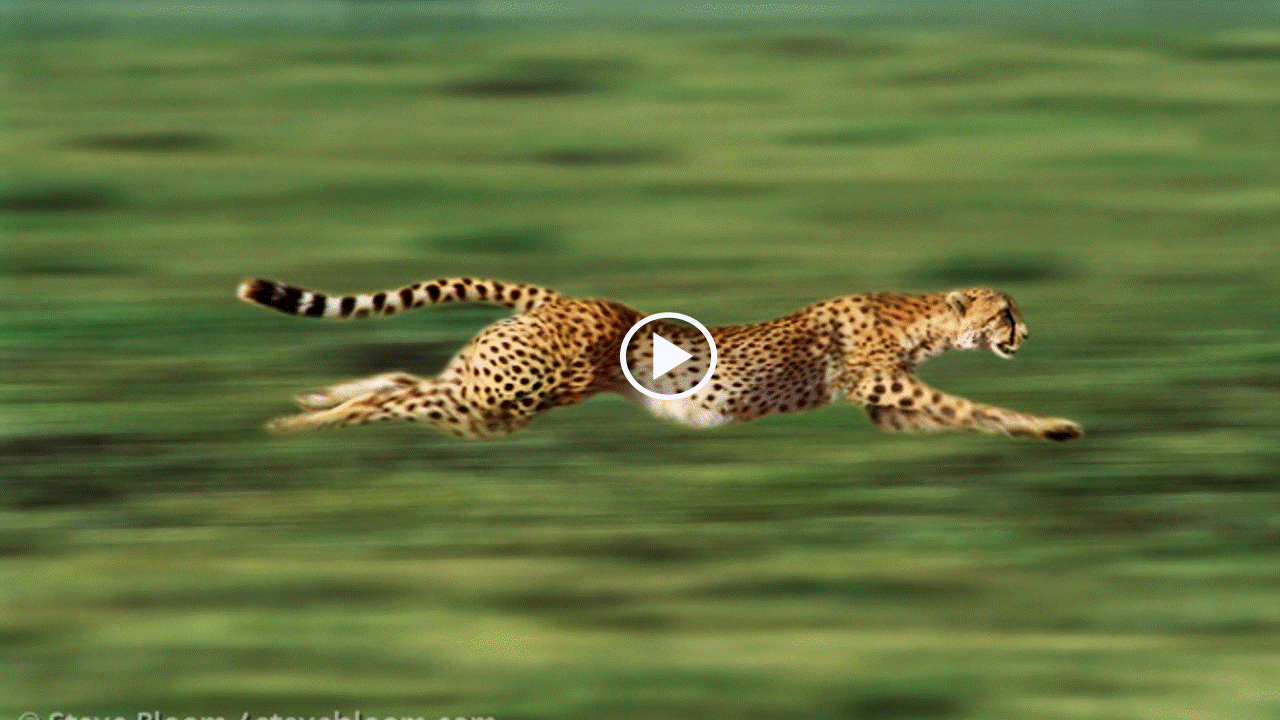When we think about speed, the animal kingdom is filled with awe-inspiring examples that defy human understanding of velocity and agility. Among these, the fastest animal in the world stands as an unparalleled marvel of evolution, blending precision, power, and breathtaking speed. Whether it's soaring through the skies, sprinting across vast plains, or cutting through the ocean depths, these creatures embody nature’s ultimate engineering, leaving scientists and wildlife enthusiasts in awe.
From the sky-dominating peregrine falcon to the terrestrial cheetah and aquatic marvels like the black marlin, the animal kingdom boasts a variety of species that excel in speed. Each species has adapted its body structure, muscle composition, and behavior for survival, giving it an edge in hunting, escaping predators, or covering long distances. But what truly makes these creatures exceptional is not just their speed but the intricate balance of power, endurance, and reflexes they exhibit in their natural habitats.
This article delves deep into the world of the fastest animals, offering insights into their biology, habitats, and the evolutionary adaptations that make them the speed champions of the natural world. By the end of this comprehensive guide, you’ll have an enriched understanding of their extraordinary abilities, their significance in ecosystems, and why they continue to inspire human innovation in sports, technology, and beyond.
Table of Contents
- Peregrine Falcon: The Sky’s Speed Demon
- Cheetah: The Fastest Land Animal
- Black Marlin: The Ocean Speedster
- Anatomy of Speed: What Makes Them So Fast?
- Avian Speed Kings
- Land Speed Records in the Animal Kingdom
- Aquatic Speedsters: Masters of the Deep
- Evolution and Adaptations for Speed
- The Role of Speed in Ecosystems
- How Fast Animals Inspire Human Innovations
- Fastest Extinct Animals: A Look at the Past
- Debunking Myths About Animal Speeds
- Conservation Efforts for Speed Champions
- FAQs About the Fastest Animals in the World
- Conclusion
Peregrine Falcon: The Sky’s Speed Demon
The peregrine falcon holds the uncontested title of the fastest animal in the world, known for its incredible dive speeds that can exceed 240 miles per hour (386 kilometers per hour). This bird of prey, widely distributed across all continents except Antarctica, is a true symbol of aerial dominance. Its speed is achieved during a hunting stoop—a high-speed dive it performs to capture prey mid-flight.
Personal Details and Biodata
| Scientific Name | Falco peregrinus |
|---|---|
| Average Speed | 240 mph (386 km/h) in a dive |
| Habitat | Wide range, from urban areas to remote cliffs |
| Diet | Birds, small mammals, and insects |
| Conservation Status | Least Concern |
The peregrine falcon’s body is built for speed. Its streamlined shape, strong chest muscles, and pointed wings reduce air resistance and maximize aerodynamic efficiency. Additionally, its sharp eyesight, which is eight times better than that of humans, allows it to spot prey from great heights. This combination of physical adaptations enables the peregrine falcon to excel as a hunter, striking its prey with unparalleled precision.
Beyond its biological prowess, the peregrine falcon has played an important cultural role. It has been a symbol of power and agility in various cultures, and its conservation success story, after being endangered due to pesticide use, is a testament to effective environmental efforts.
Cheetah: The Fastest Land Animal
...
Black Marlin: The Ocean Speedster
...
Anatomy of Speed: What Makes Them So Fast?
...
Avian Speed Kings
...
Land Speed Records in the Animal Kingdom
...
Aquatic Speedsters: Masters of the Deep
...
Evolution and Adaptations for Speed
...
The Role of Speed in Ecosystems
...
How Fast Animals Inspire Human Innovations
...
Fastest Extinct Animals: A Look at the Past
...
Debunking Myths About Animal Speeds
...
Conservation Efforts for Speed Champions
...
FAQs About the Fastest Animals in the World
Q1: What is the fastest animal in the world?
A1: The peregrine falcon is the fastest animal in the world, capable of reaching speeds of over 240 mph during a hunting dive.
Q2: Is the cheetah faster than any bird?
A2: No, while the cheetah is the fastest land animal, birds like the peregrine falcon are significantly faster in the air.
Q3: What is the fastest aquatic animal?
A3: The black marlin is considered the fastest aquatic animal, capable of swimming at speeds of up to 82 mph.
Q4: How do animals achieve such high speeds?
A4: Animals achieve high speeds through evolutionary adaptations such as streamlined bodies, powerful muscles, and specialized limb structures.
Q5: Are any extinct animals known for their speed?
A5: Some extinct species, like certain dinosaurs, are believed to have been very fast, but exact speeds are difficult to determine.
Q6: How can humans contribute to conserving fast animals?
A6: Supporting conservation organizations, reducing habitat destruction, and advocating against illegal hunting are some ways to help protect these species.
Conclusion
The fastest animals in the world are not just marvels of nature but also critical components of their ecosystems. Their speed, born out of necessity for survival, showcases the incredible adaptability of life on Earth. Whether gliding through the air, sprinting on land, or swimming in the oceans, these speed champions remind us of the beauty and complexity of the animal kingdom. As we continue to study and protect these extraordinary creatures, they will undoubtedly remain a source of inspiration and wonder for generations to come.
Article Recommendations
- Is Melanie Martinez Latina Everything You Need To Know About Her Heritage Life And Career
- Robin Roberts Leaving Gma 2024 What It Means For Morning Television
- The Power And Brilliance Of Black Girl Magic In Todayrsquos World

